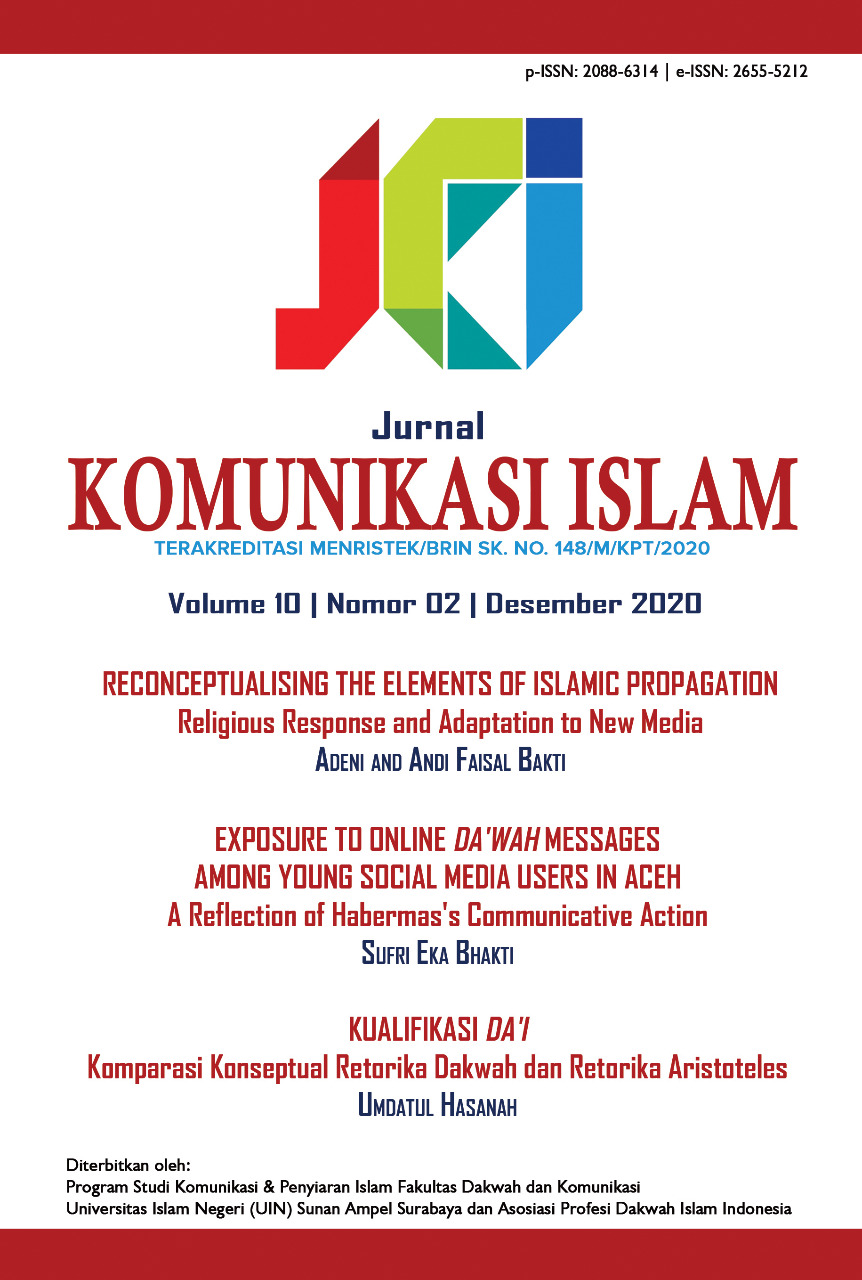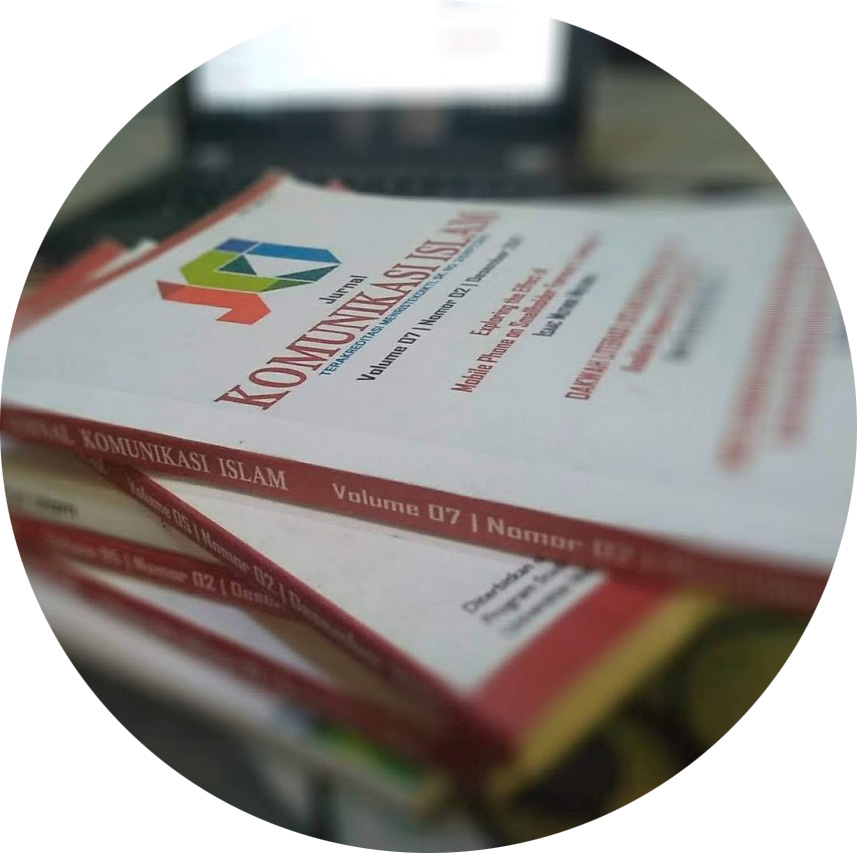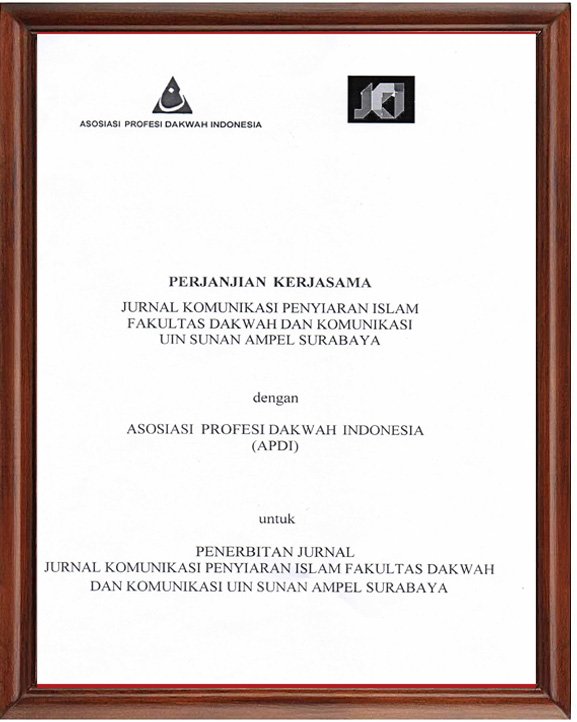Kualifikasi Da'i: Komparasi Konseptual Retorika Dakwah dan Retorika Aristoteles
DOI:
https://doi.org/10.15642/jki.2020.10.2.256-275Keywords:
Aristotle’s rhetoric, rhetoric of da'wa, credibility, competenceAbstract
The presence of Islamic preachers in the current Indonesia has marked the awakening of the world of da’wah. However, this phenomenon also has raised people's criticisms concerning the competence and credibility of Muslim preachers (da'i). This article reports on a library research regarding the conceptual comparison of Islamic propagation (da'wah) and Aristotle's rhetoric with regard to the qualifications of da'i. The results of this study has indicated that the rhetoric of da'wah which primarily rooted from divine revelation has conceptual relevance to Aristotle's rhetoric; ethos, pathos and logos. In this regard, a da'i is not only required to have credibility with moral qualities, good intentions and goals. In addition, they are also required to have the authority and scientific competence as well as an understanding of the nature of mad'u.
Downloads
References
Al-Faruqi, I. (1995). Tauhid. Bandung: Pustaka
Ali, A. (1987). Islam dan Pembebasan. Yogyakarta: LKIS
Ash-Shalaby, A.M. (2008). Biografi Umar bin Khathab. Jakarta: Al-Kautsar.
Al-Qardhawi, Y. (2004). Retorika Islam. Jakarta: Pustaka Al-Kautsar
Albitar, M. (2012). The Jewels of Rhetoric Jawahir Al-Balaghah Arabic Rhetoric. Disertation. Hawaii Pacific University. Retrieved from https://search.proquest.com/openview/6caffe338cb14bc76deade1956b16cb8/1?pq-origsite=gscholar&cbl=18750&diss=y
Braet, A. C. (1992). Ethos, Pathos and Logos in Aristotle’s Rhetoric: A re-Examination. Argumentation. Retrieved from https://doi.org /10.1007 /BF00154696
Covino. W., & David J. (1995). What is Rhetoric? Rhetoric: Concepts, Definitions. Boston: Allyn & Bacon.
Copeland, R. (2014). Pathos and Pastoralism: Aristotle’s Rhetoricin Medieval England. Speculum. 89 (1), 113-114. doi: 10.1017/S0038713413003576
El Ishaq. R (2013). Dakwah di Tengah Industrialisasi Media. Jurnal Komunikasi Islam. 3 (1). https://doi.org/10.15642/jki.2013.3.1.%p
Gifu, D. (2014). Humor in the Religious Discourse: between Paradoxism and Neutrosophy, dalam Florentin, S., & Steven, V (Eds), Communication Neutrosophic Routes, pp. 81-90. Retrived from http://citeseerx.ist.psu.edu/viewdoc/download?doi=10.1.1.465.3301&rep=rep1&type=pdf#page=89
Higgin C. Higgins, C., & Walker, R. (2012). Ethos, Logos, Pathos: Strategies of Persuasion in Social/Environmental Reports. Accounting Forum. 36 (3), 194-208. https://doi.org/10.1016/j.accfor.2012.02.003
Hughes, K. (1999). The Anatomy of Exposition: Logos, Ethos, and Pathos. The Southern Baptist Journal of Theolog. 3 (2), 44-58.
Cordova. (2015). Fenomena Dai Selebriti sebagai Solusi atau Problem Dakwah. Diakses dari https://cordofa.org/fenomena-dai-selebriti-sebagai-solusi-atau-problem-dakwah/
Keith, W., & Lundberg, C. (2014). Creating a History for Public Speaking Instruction. Rhetoric and Public Affairs. 17 (1), 139-146. https://doi.org/10.14321/rhetpublaffa.17.1.0139 https://www.jstor.org/stable/10.14321/rhetpublaffa.17.1.0139.
Kapustu., & Schwarze, M.A. (2016). The Rhetoric of Sincerity: Cicero and Smith on Propriety and Political Contex. 8 (1), 43-58. American Political Science, doi:10.1017/S0003055415000581
Littlejohn, Stephen.W., & Foss, K.A. (2008). Theories of Human Communication. Jakarta: Salemba
Mshvenieradze, T. (2013). Logos Ethos and Pathos in Political Discourse. Theory and Practice in Language Studies. 3 (11), 1939-1945. Doi:10.4304/tpls.3.11.1939-1945.
Murtadlo, A. (2019). Charisma of the Preacher as a Communicator. Jurnal Spektrum Komunikasi. 7 (1), 1-16.
Muhyiddin, A. (2016). Wawasan Dakwah Islam: Integrasi Sains dan Agama. Jurnal Anida. 15 (20), 171-188.
Mohan, B. (2014). A Study of the Use of Persuasive Strategies in Religious Oratory. International Journal of Research (IJR). 1 (1), 28-36.
Natsir, M. (1996). Fiqhud Dakwah. Jakarta: Capita Selecta.
Rakhmat, J. (2003). Psikologi Komunikasi. Bandung: Rosdakarya
Rakhmat, J. (2011). Rethorika Moderen Pendekatan Praktis. Bandung: Rosdakarya
Remer, G. (2013). Rhetoric, Emotional Manipulation, and Political Morality: the Modern Relevance of Cicero vis-à-vis Aristotle Rhetorica. A Journal of the History of Rhetoric. 31 (4), 402-443.
Rajiyem, R. (2005). Sejarah Perkembangan Rethorika. Humaniora 17(2), 142-153.
Sullivan, D.L. (1993). The Epideictic Character of Rhetorical Criticism Source. Rhetoric Review.11 (2), 339-349.
Suriasumantri, Y.S. (1998). Filsafat Ilmu: Sebuah Pengantar Populer. Jakarta: Sinar Harapan.
Simon, N. (2020). Investigating Ethos and Pathos in Scientific Truth Claims in Public. Media and Communication. 8 (1), 129–140. DOI: 10.17645/mac.v8i1.2444Article.
Shihab, M.Q. (2011). Tafsir Al-Misbah. Ciputat: Lentera Hati
Shihab, M.Q. (1997). Mukjizat Al-Qur’an Ditinjau dari Aspek Kebahasaan, Aspek Ilmiah dan Pemberitaah Ghaib. Bandung; Mizan.
Uchyana, O. (2003). Ilmu, Teori dan Filsafat Komunikasi. Bandung: Citra Aditya Bakti
Ulwan, A.N. (2001). Silsilah Madrasat ad-Du’at: Fushul al-Hadifah fi Fiqh al-Dakwah wa al Daiyah. Kairo: Dar al Islam.
Zaidan, A.K. (2001). Ushul al-Dakwah. Beirut: Muassasah Risalah.
Downloads
Published
How to Cite
Issue
Section
License
Copyright (c) 2020 Umdatul Hasanah

This work is licensed under a Creative Commons Attribution-ShareAlike 4.0 International License.













